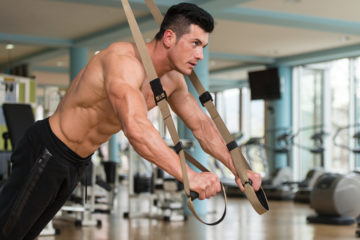The Unconventional Guide to Cardio

by Fannie Hopkins, articlicious.com
In a long-term study of the health of the people of in the United States, the U.S. Public Health Service documented the chances of developing heart disease among various groups in the population. Long before the any symptoms appeared, epidemiological research could identify high-risk groups.
Among the highest risk factors are male sex, age over 35, cigarette smoking, high blood pressure, high levels of certain blood fats, and a family history of cardiovascular disorders.
Other researchers have added to this list another risk factor: the compulsive, hard-driving, highly anxious personality. The greater the number of severity, the greater the person’s overall risk.
These threats to the heart can be divided into two main categories: those beyond individual control, such as age, sex, and heredity, and those that can be controlled, avoided, or even eliminated. Among those in the second category are what cardiologists call “the triple threat.” These are the high blood pressure, cigarette smoking, and high cholesterol levels in the blood.
If you smoke a pack of cigarettes a day, your risk of having a heart attack is twice that of a nonsmoker. If you smoke, have hypertension, and eat a diet high in fats without any exercise at all, your risk is five times greater than normal.
The Healthy Heart
If these risk factors endanger the heart’s health, what enhances its well-being and improves its odds of working long and well?
Obviously, quitting cigarettes and eating a low-fat diet will help. The next best thing you can do for your heart’s sake is to give it what it needs: regular exercise or a complete cardio interval training.
The heart is a muscle, or, more accurately, a group or “package” of muscles, similar in many ways to the muscles of the arms and legs. And just as exercise strengthens and improves limb muscles, it enhances the health of the heart muscles as well.
Since World War II, several large-scale statistical studies have evaluated the relationship between physical activity and cardiovascular disease. One well-known survey compared 31,000 drivers and conductors of some bus companies. The more sedentary drivers had a significantly higher rate of heart disease than the conductors, who walked around the buses and climbed stairs to the upper level.
The why and how behind these statistics were bet explained by classic experiments with dogs whose coronary arteries were surgically narrowed to resemble those of humans with arteriosclerosis. Dogs who were exercised were had much better blood flow than those kept inactive.
The exercise seemed to stimulate the development of new connections between the impaired and the nearly normal blood vessels, so exercised dogs had a better blood supply to all the muscle tissue of the heart. The human heart reacts in the same way to provide blood to the portion that was damaged by the heart attack.
To enable the damaged heart muscle to heal, the heart relies on new small blood vessels for what is called collateral circulation. These new branches on the arterial tress can develop long before a heart attack — and can prevent a heart attack if the new network takes on enough of the function of the narrowed vessels.
With all these facts, it is now boiled down to a single question: What should be done in order to prevent such dilemmas?
Some studies showed that moderate exercise several times a week is more effective in building up these auxiliary pathways than extremely vigorous exercise done twice often.
The general rule is that exercise helps reduce the risk of harm to the heart. Some researches further attested the link between exercise and healthy heart based from the findings that the non-exercisers had a 49% greater risk of heart attack than the other people included in the study. The study attributed a third of that risk to sedentary lifestyle alone.
Hence, with employing the cardio interval training, you can absolutely expect positive results not only on areas that concerns your cardiovascular system but on the overall status of your health as well.
This particular activity that is definitely good for the heart is a cycle of “repeated segments” that is of intense nature. In this process, there is an interchange periods of recuperation. It can both be comprehensive activity and moderate motion.
Consequently, the benefits of merely engaging into this kind of activity can bring you more results that you have ever expected. These are:
1. The threats of heart attack are lessened, if not eliminated
2. Enhanced heart task
3. Increase metabolism, increase the chance of burning calories, therefore, assist you in losing weight
4. Improves lung capacity
5. Helps lessen or eliminate the cases of stress
Indeed, cardio interval training is the modern way of creating a healthy, happy heart and body.
Effective Cardio Workouts In Only 20 Minutes
The perfect workout routine is one that combines strength training and some form of cardio. The problem is, most people hate doing cardio and will make up any excuse not to do it. A popular excuse is not having enough time. This article, however, will show you how you can spend only 20 minutes on a cardio workout and still reap the benefits.
So first of all, why is it necessary that you add cardio to your workouts? Most people understand the benefits of strength training because it adds muscle and muscle makes you healthier, more lean and stronger overall.
But what are the benefits of cardio? Here is a short list that names just a few:
– it helps reduce stress
– it burns calories which leads to weight loss
– it makes your heart and lungs stronger
– it reduces your risk of certain diseases
– it reduces depression and increases confidence
– it gives you more energy and helps you sleep better
To sum it up, adding cardio to your workout improves your health and well-being which leads to a better quality of life. Combine this with strength training and you’re on your way to feeling great, fast.
So how can you reap the benefits of cardio in only 20 minutes per workout? It’s called Interval Training and it can be applied to many different forms of cardio including boxing, running and biking.
The concept in a nutshell is shorter workouts, but higher intensity. This is accomplished by pushing hard for say two minutes and then slowing down for two minutes. If you repeat this cycle four more times then you have your 20 minutes. You could also do one minute hard, one minute easy and then repeat this nine more times.
Here is an example:
Interval training is perfect for running. If you’re working out on a treadmill or running outdoors, it’s the same routine. Start out with a warm up jog followed by two minutes of a challenging pace. This won’t be your all out because you have to maintain it for two minutes, but a pace that will be very hard for you. You then follow this with two minutes of either a walk or a very slow jog. Repeat four more times and you’ve got yourself an effective cardio workout in only 20 minutes.
This concept can be applied to many different forms of cardio: two minutes hard, two minutes easy, repeat four more times. Or one minute hard, one minute easy, repeat nine more times.
You’ll get your blood flowing, your heart pumping and reap all the benefits cardio has to offer…all in only 20 minutes.
Cardio-Boxing for Super Fitness
Sports scientists agree that cardio-boxing is one of the best forms of exercise, because it conditions the total body and provides a complete workout for your cardiovascular and endurance systems.
The major benefits of cardio-boxing include:
- Increased Stamina
- Increased Strength
- Increased Speed
- Increased Coordination
Cardio-boxing also promotes a person’s well being by strengthening their self-discipline and combined with strength training it’s well and truly the total package for self-defence and fitness and usually consists of:
- Adjusted heart rate work
- Actual boxing techniques
The usual workout consists of the age-adjusted heart rate work starting with 10 minutes for beginners and leading up to 20 minutes for the more advanced. For the second part of the workout, you’ll need to perform and practice 20 minutes of actual boxing techniques.
Cardio
The best way to measure the effects of an exercise program on your body is to check your pulse.
The easiest way to check the pulse is to place your index and middle fingers on your carotid artery or the wrist. Immediately after the exercise, count your pulse for 15 seconds and multiply by 4.
You can also check your pulse during the exercise but with safety as a first priority. To get a more precise reading of your pulse rate, purchase an electronic device from any sports store.
Now you have your exercising pulse rate or heartbeats per minute. We’ll be concentrating at the upper end of your pulse region: the 50% – 70% ranges.
To figure this out, deduct your age from 220. Suppose your age is 40, deduct this from 220 and you get 180.
50% of 180 is 90 beats a minute,
60% of 180 is 108 beats a minute,
70% of 180 is 126 beats a minute and so on.
Don’t jump into 70% work straight away. Start with 50% and slowly work your way up to the 70% upper limit.
Start with no more than 10 minutes, and work up to 20 minutes. Once you’re comfortable with working out for 20 minutes at 70% then try to increase the heart rate up to 80%.
Mix up your cardiovascular activities in the gym. Use the treadmill, skipping, rower, climber, and bike and other equipment that might be available to you.
Boxing
The boxing stance is the posture a boxer takes before and after every action depending on whether you are left or right handed. We’ll be dealing with the most common; right-handed. For left-handed people, just reverse the instructions.
Stand with your feet shoulder width apart, with your left foot in front of your right foot. Your right heel should be slightly raised with your left foot flat on the floor and toes pointing ahead.
Bend your knees a little and balance your weight comfortably and evenly. Place your elbows close to your body with your left fist held at head height and in a position that corresponds to your left foot.
The right fist should be at head height also and guarding the chin, with both elbows protecting your body and both fists protecting your chin.
This is your defensive and offensive position after throwing punches, so please practice this before going any further. When moving forward in this boxing stance the left foot moves forward first and then the right follows.
When moving back, the right moves back and then the left follows. When moving sideward to the right, the right foot moves first followed by the left. When moving sideward to the left, the left foot moves first followed by the right.
Practice this moving forward, back and sideward in the boxer’s stance until it is done smoothly and quickly. Remember to keep your guard up and elbows tucked in to your sides.
Keep your head at eye level with your upper body leaning forward slightly. In boxing it is important that punches are thrown quickly and then bought back quickly to assume a defensive posture.
Punching
A left jab has many uses, it can be used for both offensive and defensive actions. From the set stance the left arm is pushed quickly and forcefully forward, the weight is shifted to the front foot. The fist moves in a straight line and straight back again for defence.
At the moment of impact the back of the hand and the lower arm are in a straight line. Keep the right fist in the defensive position and elbow tucked into the body during the movement.
The straight right is also known as the punching hand and can be thrown with considerable force. The arm moves straightforward from the chin, the body weight is shifted to the front foot with the ball of the foot of the back leg pushing into the floor for more power.
The back of the hand is straight and pointing up at the moment of impact. The arm is then immediately pulled back for protection after the hit.
The left hook to the head and body is an effective punch for closer range work. From the set stance turn your left shoulder quickly and move your elbow up to shoulder height. The fist moves in a circular motion to the target, with the elbow bent.
Rotate your hip and body whilst pressing your front left down keeping the back of your fist pointing up and in a straight line with the lower arm. The left hook to the body is similar to the above but increases the rotation of the body
The right uppercut is also carried out at close range. Drop the lower part of your punching arm until the lower and upper arm is at right angles to each other. The back of your hand should be pointing away from you, now thrust your arm forward and upward to your target.
Shift your body weight to your front leg and rotate your hip and shoulder on the same side. Remember to keep your left fist guarding your chin during the entire movement. Now practice all your punches until they are done quickly and smoothly.
To develop speed and endurance, try punching straight left and right combinations into the heavy bag. The duration of the exercise period is the same as the rest period i.e. 10 seconds exercise, 10 seconds rest, 20 seconds exercise, 20 seconds rest, and so on. Move up higher as your condition improves.






No Comment